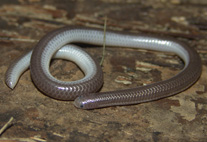Abstract
The present study is a synthesis on snake diversity and distribution in the Caatinga region of northeastern Brazil, providing an updated species list and data on natural history and geographic distribution. Our study is based on the careful revision of 7,102 voucher specimens, housed in 17 herpetological collections, complemented by data on taxonomic literature. We recorded a total of 112 snake species in the Caatinga, belonging to nine families: Anomalepididae, Leptotyphlopidae, Typhlopidae, Aniliidae, Boidae, Viperidae, Elapidae, Colubridae, and Dipsadidae. Our list includes at least 13 never recorded species for this region, as well as distribution records for all species known from the Caatinga (including expansion and new records of distribution). The snake assemblage of the Caatinga is complex, sharing species with other continental open areas (38.4%), forested areas (27.7%), and both open and forested areas (32.1%). The richest areas were isolated plateaus, followed by contact areas, semi-arid caatinga, and sandy dunes of the São Franscisco River. We identified 22 Caatinga endemic species with the sandy dunes of São Franscico River showing the highest endemism level (12 species, with six endemic species restricted to the area) followed by semi-arid caatinga, and isolated plateaus (eight endemic species each, and six and three endemic species with restricted distribution to each area, respectively). Most species show relatively restricted ranges in parts of the Caatinga. The snake assemblage in Caatinga includes mainly terrestrial species (38.4%), followed by fossorial/cryptozoic (26.8%), arboreal/semi-arboreal (26.8%), and aquatic/semi-aquatic (7.1%) species. Vertebrates are the most important dietary item (80.4%), with 56.6% of species being generalist consumers of this kind of prey; 24.4% are frog-eaters, 7.8% prey on caecilians/amphisbaenians, 6.7% lizard-eaters, 3.3% mammal-eaters, and 1.1% are fish-eaters. Only 18.7% of the snakes eat invertebrate prey, as arthropods, annelids, and mollusks. In relation to time of activity, 35.7% of snakes are both diurnal and nocturnal, 33.0% are strictly nocturnal, and 30.4% are diurnal. The data provided herein increase the list of Caatinga snake species from 50 to 112, and includes detailed maps and information on geographic distribution. The Caatinga snake assemblage shows high richness and endemism levels, and our results highlight the usefulness of basic natural history data and revision of voucher specimens as baseline information for biogeographic studies and conservation strategies.

